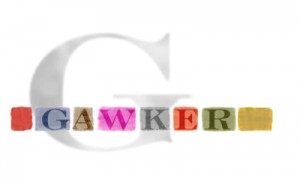Many marketers toiling in the new media and communications paradigm view a campaign’s virality as the holy grail measurement of success. The bar to achieve such digital and social nirvana, however, is higher than ever given the firehose of content gushing from myriad sources. Did you know that YouTubers upload 72 hours of video every minute of every day?
More and more digital creatives have thus had to resort to shock and awe as a means for garnering those much coveted “likes,” “re-tweets,””views,” and “shares” in the social spheres. The more outrageous, the bigger the social mojo. (Isn’t this the not-so-subtle genius of sites like Buzzfeed and Gawker, and their founders Peretti and Denton?)
Furthermore, many viral-seeking content producers no longer feel obligated to even identify the client behind their audacious output. The provenance of everything from high-priced YouTube video clips to those especially nasty political spots often remains a mystery.
With the advent of a direct-to-consumer “owned” media model, all hell broke loose. It now matters little who’s behind that piece of digital content or whether it crosses the boundaries of good taste. It’s all about the eyeballs and shareability. On the paid side of the media equation, I’d venture to say that the standards & practices departments of the TV networks and local stations have completely disintegrated. They’re all too happy to rake in the ad revenue even though the funding and veracity of the paid spots they air leave their viewers hopelessly in the dark.
Several years ago I wrote about the trend wherein online marketers, mostly with roots in paid advertising, chose to exclude the name of their clients in their creative executions.
Where was that swooshy branding in that viral video of Kobe Bryant leaping over an oncoming Aston Martin?
Bona fide PR firms learned a painful lesson from non-disclosure in the VNR era, and today tend to take a more prudent approach to disseminating original content. Could PR pros’ grounding in news-driven content creation put them at a disadvantage as compared to the no holds barred campaigns emanating from those on the other side of the marketing aisle? If you’re in Cannes this week, you’d think so. The PR biz fell way short on the awards front.
In a piece appearing on Paul Holmes blog, “Creativity at all Costs? PR Firms Ponder Lessons from Cannes Lions,” Arun Sudhaman observed:
Cannes, Lion D’Or”Even if you accept that the Cannes Lions are a vehicle to access the consumer marketing side of the equation, there is plenty to ponder in the results from this year’s competition. Unlike last year, when the judges made behavioural change a clear priority, this year’s panel appeared to place a higher premium on, as jury president Gail Heimann put it, “an unbelievable, jaw-dropping idea.â€
Mashable just reposted a piece that appeared in the Daily Dot titled “Fake Viral Campaigns Shock Users, But at What Cost?” In it, writer Lauren Rae Orsini cited a campaign by the Troy (MI) public library, which was in danger of closing its doors:
“…suddenly, the Book Burning Party arrived. Yard signs, a Facebook group, and a Twitter campaign popped up with the message: “Vote to Close Troy Library on Aug. 2 — Book Burning Party on Aug. 5.â€
The campaign achieved the desired result:
“Citizens were furious. Outraged voters showed up to the polls to make their opposition to book-burning known. The tax hike passed by a landslide. It was only after the campaign had made national news, however, that the Book Burning Party was revealed to be an advertising hoax by Leo Burnett Detroit. The campaign even won an award.”
She went on to cite another “shell” campaign:
“Just last week, an unbelievable social campaign popped up on a site that claimed to be owned by Shell Oil Co. “Let’s Go!†was purportedly a campaign to inspire Shell fans to come up with slogans about the positives of drilling for oil in the arctic. Not surprisingly, it was soon hijacked by environmentally minded users who created ads to make Shell look bad.
That was exactly what the campaign’s real creators, Greenpeace and the Yes Men, intended. Participants may have felt clever using Shell’s own interface to deride it, but they were less than pleased to learn that they were the ones being manipulated.”
So I ask:
Just how far will marketers go to rise above the clutter that flows incessantly across consumers’ desktops, laptops, and mobile devices?
Does the PR industry really need to sell its soul for a Cannes Lion d’Or?

